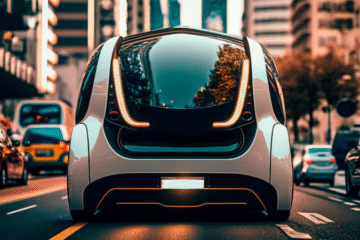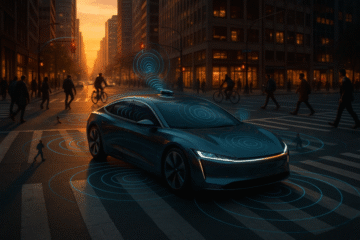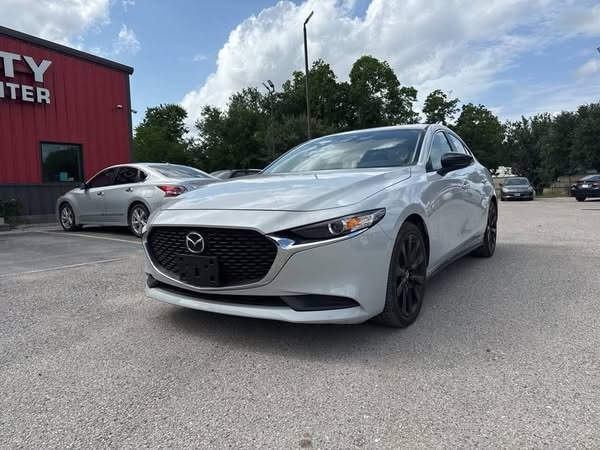
The Role of Artificial Intelligence in the Automobile Industry
Introduction
The automobile industry is undergoing one of its most transformative periods, and at the heart of this change is Artificial Intelligence (AI). Once a concept confined to futuristic movies and research labs, AI is now becoming a core component in vehicle design, manufacturing, and operation. Whether it’s through the development of autonomous vehicles, smart manufacturing systems, or enhanced safety features, AI is reshaping the way we drive and build cars. With AI playing such an integral role, the future of transportation is already being defined today. This article explores how AI is influencing the automobile industry, from making cars smarter to enhancing safety, performance, and production efficiency.
How AI is Shaping the Future of Cars
AI is changing the way vehicles operate and interact with their environment. Cars are no longer just mechanical machines; they are becoming sophisticated, intelligent systems that can learn, adapt, and respond in real-time to their surroundings.
1. Autonomous Vehicles
Autonomous vehicles, or self-driving cars, are perhaps the most exciting manifestation of AI in the automobile industry. AI makes self-driving possible by processing data from a variety of sensors, cameras, and radar systems to enable cars to navigate without human intervention. These vehicles use machine learning and deep learning algorithms to analyze their environment, predict potential obstacles, and make real-time decisions on acceleration, braking, and steering.
While fully autonomous vehicles (Level 5) are still in the testing phase, major automakers like Tesla, Waymo, and Cruise have already made significant strides with Level 4 autonomy, where vehicles can drive themselves within certain geofenced areas with no human driver present. The key benefit of autonomous driving is the potential for safer roads, as AI systems can react faster and more consistently than humans.
2. Intelligent Driving Assistants
AI is also enhancing everyday driving experiences through Advanced Driver Assistance Systems (ADAS). These systems include features like adaptive cruise control, lane-keeping assist, and automatic emergency braking. These technologies rely on AI to detect objects, other vehicles, and pedestrians in real-time and make driving decisions to improve safety. For instance, if a car is about to collide with an object, AI-powered systems can automatically apply the brakes, reducing the risk of an accident.
AI is also being used in smart navigation systems, where the car can not only suggest the fastest route but also analyze traffic patterns, road conditions, and even weather forecasts to provide the most optimal driving experience. In the near future, cars may also be able to communicate with each other and with city infrastructure, further enhancing safety and efficiency.
3. Personalization of In-Car Experience
In-car personalization is another exciting area where AI is making an impact. AI can analyze data from drivers and passengers to customize various aspects of the car’s interior, such as adjusting the seat, controlling the climate, and selecting entertainment preferences. Over time, the system learns the driver’s habits and preferences, enhancing comfort and convenience.
AI in Manufacturing and Design
AI’s influence isn’t just limited to how cars operate on the road; it’s also transforming how they’re built. From design to assembly, AI is making the manufacturing process more efficient, accurate, and cost-effective.
1. Design and Prototyping
Traditionally, car design was a highly manual process, but now AI is changing that. Generative design algorithms, powered by AI, can create thousands of design variations based on specific parameters such as weight, strength, and material type. These algorithms generate highly optimized designs that engineers might not have considered, leading to lighter, more efficient parts. This approach is not only speeding up the design process but also allowing engineers to push the boundaries of innovation.
2. Smart Manufacturing
AI is making manufacturing more efficient and precise by automating various processes that were once handled manually. Robotic arms, equipped with AI, can perform tasks such as welding, painting, and assembly with great accuracy, and are continuously improving their performance through machine learning. The vision systems used in these robots can detect even the smallest imperfections in parts, ensuring that only the highest-quality components make it onto the assembly line.
3. Quality Control and Testing
AI is revolutionizing quality control by offering faster, more reliable systems to detect flaws. AI-powered image recognition systems can spot minute defects in parts or products that human inspectors might miss. These systems can also analyze data from production lines in real-time to predict potential failures before they occur, allowing for preventive action and reducing costly downtime.
AI for Vehicle Safety and Performance
AI is not just about making cars smarter—it’s also about making them safer and more efficient. Here are some of the ways AI is enhancing vehicle safety and performance:
1. Enhanced Safety Features
AI is being integrated into safety systems to help prevent accidents and protect vehicle occupants. Features like automated parking, blind spot detection, and traffic sign recognition are powered by AI. These systems work together to reduce human error and make driving safer. For example, adaptive cruise control uses AI to adjust the car’s speed based on traffic conditions, while lane-departure warning systems can alert drivers when they are unintentionally drifting out of their lane.
One of the most promising AI-driven safety features is collision avoidance. Using AI, the car can analyze its environment and make real-time decisions to avoid potential collisions. In critical situations, AI can apply the brakes or steer the vehicle to minimize the impact, dramatically reducing the likelihood of serious accidents.
2. Vehicle Performance Optimization
AI also plays a significant role in optimizing vehicle performance. In electric vehicles (EVs), AI algorithms analyze driving patterns and adjust energy usage to extend the car’s range. In hybrid vehicles, AI manages the interaction between the electric motor and the gasoline engine, switching seamlessly between power sources to maximize fuel efficiency. Additionally, AI is being used to fine-tune engine performance, making cars more responsive and efficient.
3. Autonomous Testing and Simulations
Before self-driving cars can be deployed on public roads, they undergo rigorous testing. AI is used to simulate different driving scenarios in a virtual environment, enabling engineers to test how the vehicle will respond to various conditions such as bad weather, road closures, and other unexpected situations. These simulations help accelerate the development process and ensure that autonomous vehicles are capable of navigating safely in real-world conditions.
Conclusion
Artificial Intelligence is at the forefront of the automotive revolution, and its impact on the industry is far-reaching. From autonomous driving and smart safety features to innovative manufacturing techniques and performance optimization, AI is making cars more intelligent, safer, and more efficient than ever before. As AI continues to evolve, the automobile industry will undoubtedly experience even greater advancements, from fully autonomous vehicles to smarter manufacturing systems. The future of cars is clearly defined by AI, and as this technology continues to mature, we are entering a new era of transportation that promises to be safer, more efficient, and environmentally friendly.









